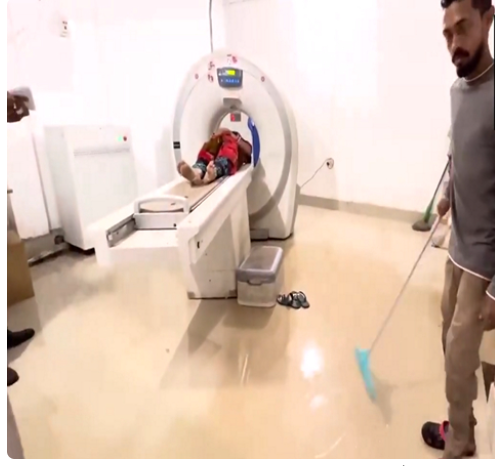

Bhubaneswar, July 13: Patients at a government hospital in Odisha’s Mayurbhanj district were subjected to risky conditions as heavy rainfall flooded critical diagnostic rooms, including those housing CT scans and MRI machines.
The continuous downpour led to severe water seepage into the hospital's radiology section, leaving floors waterlogged and patients undergoing essential medical tests in hazardous conditions. Photos and videos from the scene show patients and their families wading through ankle-deep water to access services.
A man who had brought his father for an MRI scan described the ordeal: “As the rain intensified, water began accumulating in the MRI room. It’s dangerous—not just for the patients, but also due to the potential electrical risks. I urge the authorities to take immediate action.”
Another family member, who brought his wife for a CT scan, echoed the concern: “There was water inside every room. I don’t know how they are safely conducting the tests. With this much water, there’s always a chance of a short circuit. Patients are clearly at risk.”
This alarming situation comes amid a larger weather crisis in Mayurbhanj, where persistent rainfall since last month has led to widespread waterlogging across several blocks and panchayats, particularly around the Similipal region. Submerged roads and poor drainage infrastructure have left villagers stranded and struggling with daily necessities.
More than 1,000 residents have been affected by blocked access and stagnant water, exacerbated by heavy siltation that prevents natural water flow. Many have been forced to wade through knee-deep water to reach their homes, as authorities grapple with delayed relief and restoration measures.
The India Meteorological Department (IMD) had reported an early arrival of the monsoon on June 29—eight days ahead of its scheduled onset on July 8—bringing intense rainfall across several districts, including Mayurbhanj.
Residents and patients alike are now urging the health department and local administration to act swiftly, both to restore safe hospital conditions and to address long-standing drainage issues that have turned seasonal rains into a recurring hazard.